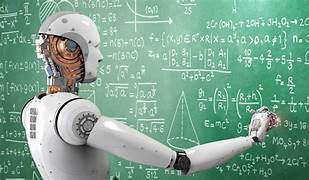Education has always been the cornerstone of progress, but the ways we teach and learn are rapidly evolving. Artificial Intelligence (AI) is no longer just a concept from science fiction—it’s becoming a transformative force in classrooms and beyond. Imagine personalised learning paths, virtual tutors available 24/7, or even AI systems predicting which students might need extra help before they even realise it themselves.
AI has the potential to revolutionise how students engage with education, how teachers approach instruction, and how institutions manage operations. As we dive deeper into this topic, we’ll explore the many ways AI is reshaping the education landscape, the challenges it poses, and what the future holds.
1. Personalised Learning: Tailoring Education to Every Student
1.1 Adaptive Learning Platforms
AI-powered platforms like DreamBox or Khan Academy customise lessons based on each student’s strengths and weaknesses. They track progress and adjust content dynamically, ensuring every learner moves at their own pace.
1.2 Individualised Feedback
AI tools provide instant, specific feedback on assignments and quizzes, helping students understand mistakes and improve quickly.
1.3 Bridging Learning Gaps
With AI, educators can identify and address gaps in knowledge, ensuring no student is left behind.
2. Virtual Tutors: Learning Beyond the Classroom
2.1 Accessible Anytime, Anywhere
AI-driven virtual tutors, such as ChatGPT, provide students with on-demand support for homework, test prep, and more.
2.2 Language Learning Assistants
Tools like Duolingo leverage AI to create engaging, interactive experiences, making language acquisition fun and effective.
2.3 Encouraging Independent Learning
AI empowers students to explore topics outside the curriculum, fostering curiosity and self-directed learning.
3. Enhancing Teaching: AI as a Teacher’s Assistant
3.1 Automating Administrative Tasks
From grading assignments to tracking attendance, AI reduces the administrative burden, allowing teachers to focus on instruction.
3.2 Data-Driven Insights
AI analytics help teachers identify trends in student performance, enabling data-informed strategies to improve outcomes.
3.3 Content Creation and Delivery
AI tools can generate lesson plans, quizzes, and multimedia content tailored to diverse learning styles.

4. Inclusive Education: Breaking Barriers with AI
4.1 Supporting Special Needs Students
AI-powered technologies like speech recognition and text-to-speech help students with disabilities engage fully in their education.
4.2 Language Translation Tools
Real-time translation apps break down language barriers, fostering global collaboration in classrooms.
4.3 Customised Learning Paths
AI ensures that students with varying abilities and needs receive the support they require to succeed.
5. Administrative Efficiency: Streamlining Educational Institutions
5.1 Predictive Analytics
AI helps schools forecast enrolment trends, optimise resources, and plan budgets effectively.
5.2 Smart Campus Solutions
AI systems monitor campus safety, manage energy consumption, and enhance overall operational efficiency.
5.3 Admissions and Recruitment
AI simplifies the admissions process by screening applications and matching candidates to programmes based on their strengths.
6. Gamification: Making Learning Engaging and Fun
6.1 AI-Powered Educational Games
Interactive games designed by AI keep students engaged while teaching core concepts.
6.2 Instant Adaptation
AI adjusts game difficulty in real-time, challenging students without overwhelming them.
6.3 Fostering a Love for Learning
Gamification with AI motivates students by turning lessons into enjoyable experiences.
7. Challenges and Ethical Considerations
7.1 Data Privacy Concerns
AI relies on vast amounts of data, raising questions about how student information is stored and used.
7.2 Bias in Algorithms
Without careful programming, AI systems can unintentionally perpetuate biases, leading to unequal opportunities.
7.3 Teacher-Student Relationships
As AI takes on more roles, maintaining the human connection in education becomes crucial.
8. Preparing Students for an AI-Driven World
8.1 Emphasising Digital Literacy
Students need to understand AI basics to navigate future careers confidently.
8.2 Focusing on Problem-Solving Skills
While AI can handle routine tasks, critical thinking and creativity remain uniquely human strengths.
8.3 Career Guidance with AI
AI tools like LinkedIn’s career explorer suggest future career paths based on skills and interests.
9. AI in Higher Education: Research and Beyond
9.1 Enhancing Research Capabilities
AI accelerates data analysis, enabling researchers to make discoveries faster than ever.
9.2 Virtual Labs
AI-powered virtual labs provide hands-on experiences without the need for expensive equipment.
9.3 Personalised Degree Programmes
Higher education institutions use AI to design courses tailored to students’ career aspirations.
10. The Future of AI in Education
10.1 Hybrid Learning Models
AI will complement traditional teaching methods, creating a balanced and effective hybrid model.
10.2 Lifelong Learning
AI platforms will support continuous education, helping individuals upskill throughout their lives.
10.3 Collaboration Between Humans and AI
Teachers and AI will work together, each leveraging their strengths to create the ultimate learning environment.
Conclusion: The Dawn of a New Educational Era
AI is more than just a tool—it’s a partner in revolutionising education. By making learning more personalised, accessible, and efficient, it has the power to bridge gaps and open new opportunities for students and teachers alike. While challenges like data privacy and ethical considerations need to be addressed, the potential benefits far outweigh the risks.
As we embrace AI in education, we’re not just preparing students for a tech-driven world—we’re shaping a future where learning knows no boundaries.
FAQs
1. How is AI improving education?
AI enhances education by personalising learning, automating administrative tasks, and providing virtual tutoring.
2. Can AI replace teachers?
AI is a valuable tool but cannot replace the empathy, creativity, and mentorship that teachers provide.
3. Are AI-powered learning platforms safe for students?
When used responsibly, AI platforms are safe, but data privacy policies must be enforced to protect student information.
4. How can AI help students with disabilities?
AI tools like speech recognition, real-time captions, and adaptive learning software make education more inclusive.
5. What skills will students need in an AI-driven future?
Digital literacy, critical thinking, creativity, and adaptability are essential for thriving in an AI-driven world.
6. Are there free AI tools for education?
Yes, platforms like Khan Academy and Grammarly offer free AI-powered tools for students and teachers.
7. What’s next for AI in education?
The future includes hybrid learning models, lifelong education platforms, and seamless collaboration between humans and AI systems.